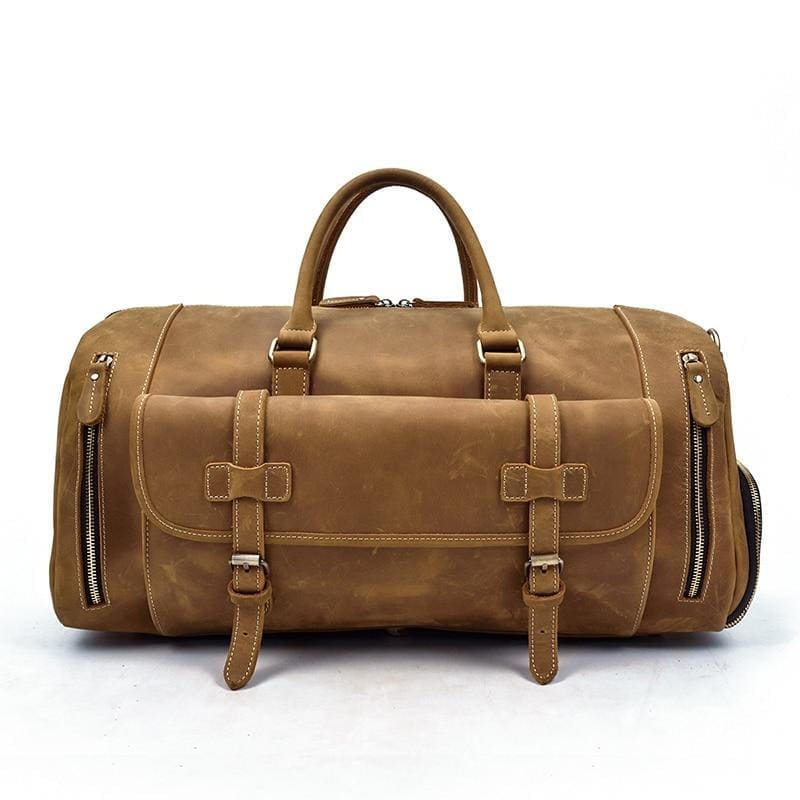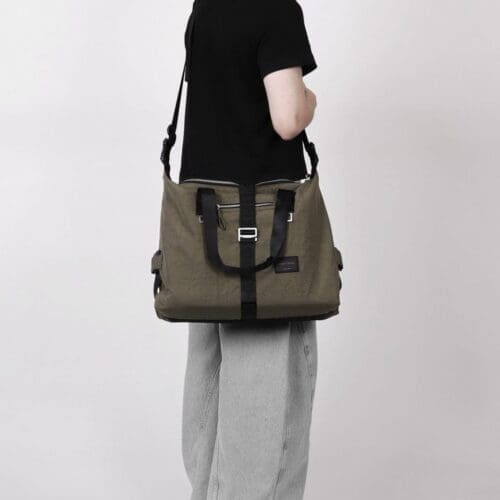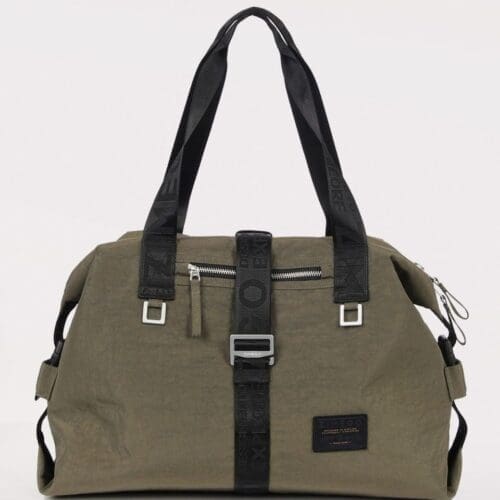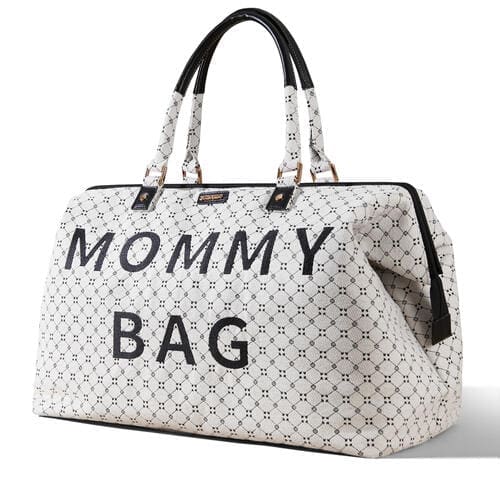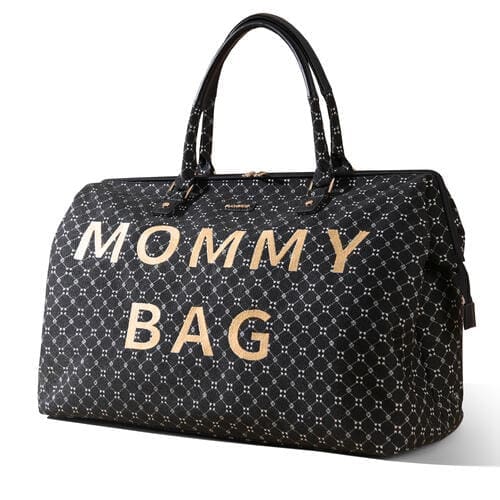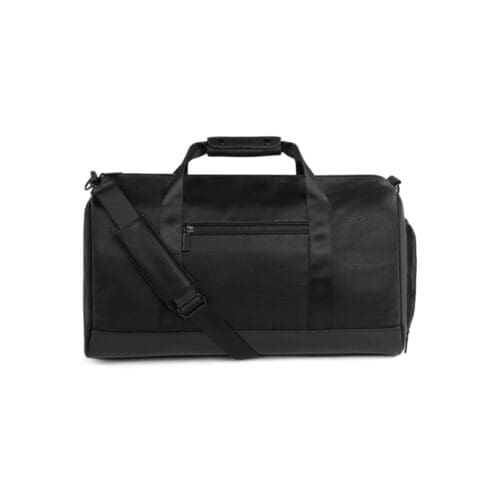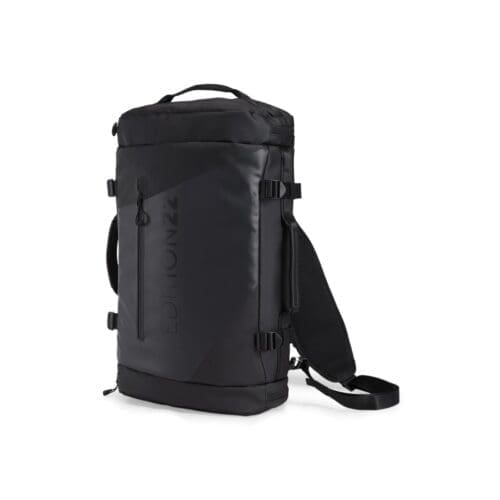Handbags
Duffle Bag vs. Duffel Bag: What’s the Difference—and Which Is Correct?
Many of you and our employees make comments (some funny) about my spelling mistakes…. well… here are my answers 🙂
If you’ve ever browsed online for a sturdy weekend bag or a reliable travel companion, you’ve likely stumbled into a tiny dilemma: Should you search for a “duffle bag” or a “duffel bag”? At first glance, these two terms look almost identical—a simple switch of the “e” and “l.” Yet, behind this slight difference lies an intriguing story that combines language evolution, global travel, cultural preference, and the history of one durable, classic bag.
So—are both “duffle bag” and “duffel bag” correct? Why do both spellings exist? And is there a preferred version you should use for your next big purchase? This post will answer these questions and uncover the origins and lasting legacy of the mighty duffel (or duffle!) bag.

Understanding the Terms: Spelling, Meaning, and Usage
Let’s start with the basics: Both “duffel bag” and “duffle bag” refer to the same essential item—a large, cylindrical bag made from a tough fabric, traditionally closed with a drawstring at the top, and most often used for travel, sports, hiking, or military purposes. Nowadays, the classic duffel bag design has been reinterpreted and modernized by countless brands, appearing in everything from luxury luggage lines to retro athletic collections.
But here’s where it gets interesting:
While both terms are widely used and understood, “duffel bag” is considered the “original” spelling, especially in American and international English circles. “Duffle bag,” on the other hand, is a recognized variant—one that’s grown in popularity over time, particularly in British English.
If you’re worried about making a mistake, relax—either spelling is generally acceptable in formal and informal writing. Yet, knowing the context and cultural nuances behind each term can give you an edge as a writer, brand, or savvy traveler.
The Origin Story: A Belgian Town Called Duffel
To truly appreciate the duffel/duffle bag debate, it helps to take a quick leap back in time—a few centuries.
The story begins not with the bag itself, but with the fabric from which it was made. In the town of Duffel, located near Antwerp in Belgium, weavers produced a rugged, heavyweight woolen cloth as early as the 17th century. Known as “Duffel cloth,” this tough, wind- and water-resistant material was highly prized for coats, cloaks, and, eventually, for bags that needed to endure the elements.
Sailors, soldiers, and travelers prized bags made from original Duffel cloth, recognizing their utility and resilience. The name of the fabric naturally became associated with the bag’s shape and function: “bag made of Duffel.” Thus, the term “duffel bag” was born.
Over time, the popularity of this functional design grew—and with it, the term itself began to transcend cloth and geography alike.
From Cloth to Icon: The Evolution of the Duffel Bag
From military kit to fashion staple: The duffel bag’s rise from utilitarian equipment to iconic, almost nostalgic, status is a journey worth celebrating.
- Military Usage: The duffel bag gained particular fame during the 20th century, when it was widely issued to soldiers and sailors. Its simple, tube-like shape, large capacity, no-nonsense drawstring closure, and easy portability made it ideal for military life. Packed with uniforms, boots, and personal items, the duffel became a symbol of travel, adventure, and resilience.
- Sports and Recreation: In the postwar years, athletes and sports teams embraced the design. Soon, the “gym duffel” or “athletic duffel” was a familiar sight in locker rooms and stadiums everywhere.
- Travel and Fashion: As travel became more accessible, the duffel’s blend of durability and style made it a go-to for vacationers, college students, and business travelers. High-end designers and luggage companies introduced luxury versions, and the bag’s shape inspired innovations in weekenders and carry-ons.
Regardless of its spelling, the “duffel/duffle bag” became a symbol of motion, freedom, and endurance.
Spelling Showdown: Duffel vs. Duffle
So, why the different spellings? The answer is rooted in the same linguistic trends that have given us “color” and “colour,” “theater” and “theatre,” “gray” and “grey.” English has always been an adaptive, flexible language, absorbing influences from everywhere.
- Duffel: Stays true to the name of the Belgian town and the original fabric. It’s the form found in historical documents and dictionaries dating back hundreds of years, and the preferred spelling in American English today.
- Duffle: This variant emerged over time, likely as a result of pronunciation and natural spelling drift. In British English, both “duffel” and “duffle” now appear almost interchangeably, though “duffle” seems a bit more common in the modern UK vernacular.
Contemporary Usage:
If you do a quick survey of major luggage brands, sports equipment sellers, and English-language publications, “duffel bag” outnumbers “duffle bag” overall—particularly in American and Canadian writing. The Associated Press Stylebook, Oxford Dictionary, and Merriam-Webster all recognize “duffel bag” as the chief spelling, with “duffle” listed as an accepted variant.
Key point:
There is no meaningful difference in meaning between “duffel” and “duffle.” Whatever spelling you choose, your readers will understand what you mean!
Which Should I Use?
American audience:
Stick with “duffel bag.” It’s the more common—and often expected—spelling.
UK-based audiences:
You have some freedom. “Duffle bag” tends to edge out “duffel” these days in everyday British English, but both are seen as correct.
International travelers:
Either spelling works, but using “duffel bag” might make your site or content a touch more universally recognized.
If you’re describing the historical or fabric-based roots:
“Duffel” is technically the better choice, as it pays homage to the Belgian origins of the fabric and bag design.
In short: Don’t worry too much! Both will serve you well.
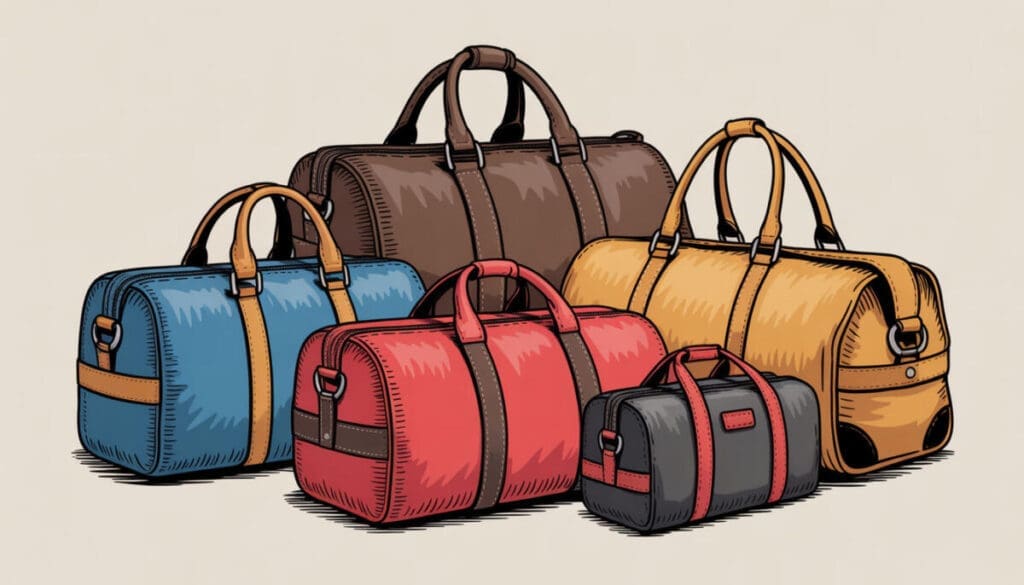
Fun Facts and Cultural Connections
- The Duffel Coat: The same heavy, warm wool from Duffel, Belgium, also gave rise to the famous “duffel coat,” loved by British naval officers (and Paddington Bear!) for its warmth and durability.
- In Popular Culture: The duffel/duffle bag shows up everywhere from classic war movies, music videos, to TV series about sports teams and high school road trips. It’s turned into a shorthand for “life on the move.”
- Backpack vs. Duffel: While “backpack,” “holdall,” “weekender,” and “satchel” all have their fans, no other design quite combines the simplicity, capacity, and throwback charm of an authentic duffel.
The Modern Duffel Bag: More Than a Name
Today, the duffel bag comes in seemingly infinite variations—in traditional canvas or leather, in technical fabrics for hikers and athletes, in miniature or supersized options for every journey. Rolling duffels, waterproof duffels, zippered duffels, and luxury leather duffels crowd the shelves of major retailers and specialty boutiques alike.
What to look for in a quality duffel (or duffle!) bag today:
- Durable fabric—canvas, nylon, or premium leather
- Strong stitching and reinforced handles
- A spacious main compartment, sometimes with organizational pockets
- Secure zip- or drawstring-closures
- Comfort features, like padded shoulder straps or wheels for travel
Whether you opt for traditional or trendy, minimalist or maximalist, the modern duffel/duffle is wonderfully versatile—a perfect match for commuters, jet-setters, athletes, and anyone with a taste for adventure.
Why Does the Spelling Matter?
At a time when more people shop online and language continues to adapt to search engine algorithms and global audiences, spelling can be a branding detail worth paying attention to.
- SEO Considerations: Both “duffel bag” and “duffle bag” are searched often. While “duffel bag” slightly outranks in global volume, using both terms in your website copy or product descriptions can help capture a broader audience and improve your visibility in search engines.
- Brand Consistency: Pick a spelling and stick with it for your products, web copy, and communications. Consistency builds professionalism and trust.
- Connection to Heritage: Using “duffel” can evoke a sense of tradition and authenticity—a nod to the bag’s heritage. “Duffle” can feel a touch more casual or contemporary.
Embracing Both Spellings: Celebrating a Global Classic
Ultimately, the “duffel bag” vs. “duffle bag” distinction is a minor one—a charming quirk in the English language and a nod to the bag’s enduring popularity across centuries and cultures. Both spellings are correct, widely accepted, and point to the same ruggedly elegant, endlessly useful travel companion.
Next time you’re packing for a trip, running to the gym, or browsing luggage online, you’ll know: whatever you call it—a duffel or duffle—this bag represents an enduring standard in adventure, convenience, and style.
Key Takeaways: Duffel vs. Duffle Bag
- “Duffel bag” is the original spelling, tied to the Belgian town of Duffel and its woolen fabric.
- “Duffle bag” is a variant spelling, more common in British English but increasingly seen everywhere.
- Both spellings are correct; neither is “wrong.”
- Use “duffel bag” for American audiences or when referencing tradition; use “duffle bag” for UK style or modern branding.
- Today’s duffel bags come in a wide range of shapes, sizes, and materials—choose one that suits your needs and style.
Duffel Bags
Duffel Bags
Duffel Bags
Do you need a Duffel/Duffle Bag?
A duffel bag is the ultimate essential for anyone who values versatility, style, and functionality in their everyday life. Whether you’re a frequent traveler, a gym enthusiast, or someone who likes to be prepared for spontaneous adventures, a quality duffel bag offers the convenience of spacious, easy-access storage in a design that’s both stylish and durable. Unlike traditional suitcases or rigid backpacks, a duffel bag’s soft structure and roomy interior make packing larger or oddly shaped items a breeze, while sturdy handles and shoulder straps ensure comfort no matter where your day takes you.
Owning a duffel bag means always being ready for whatever life throws your way—weekend getaways, gym sessions, road trips, or even last-minute errands. Its lightweight, flexible design saves you time and hassle, letting you switch effortlessly from work to play without missing a beat. Plus, a well-chosen duffel can elevate your look, conveying adventure and confidence while blending seamlessly with any outfit. In short, a duffel bag isn’t just a bag—it’s your reliable companion for a life on the move.

